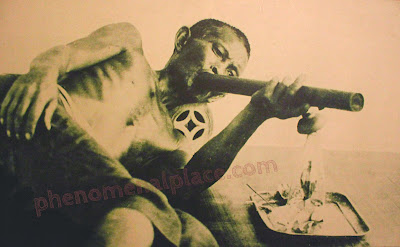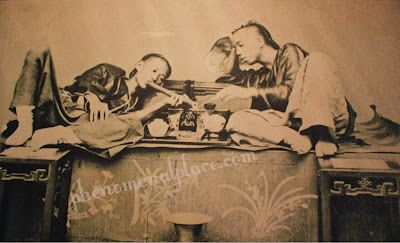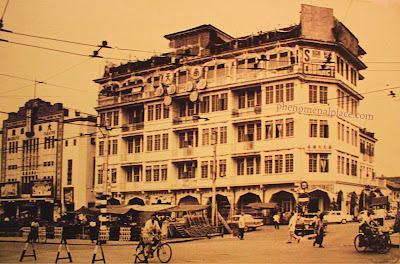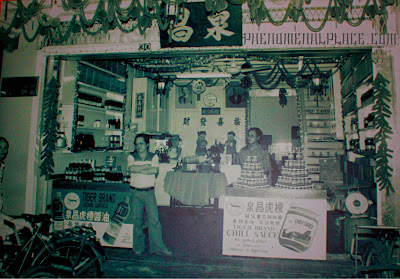- Joined
- Jul 24, 2008
- Messages
- 33,627
- Points
- 0
THE HISTORY OF SINGAPORE'S CHINATOWN FROM CHINATOWN HERITAGE CENTRE<style>.node-article .field-name-ad-box-in-article {float: left;margin: 15px 15px 10px 0;}.node-article .field-tags{clear: both;}</style>
Post date:
24 Jun 2014 - 9:27pm

<ins style="margin: 0px; padding: 0px; border: currentColor; width: 336px; height: 280px; display: inline-table; visibility: visible; position: relative; background-color: transparent; border-image: none;"><ins id="aswift_1_anchor" style="margin: 0px; padding: 0px; border: currentColor; width: 336px; height: 280px; display: block; visibility: visible; position: relative; background-color: transparent; border-image: none;"><iframe name="aswift_1" width="336" height="280" id="aswift_1" frameBorder="0" marginWidth="0" marginHeight="0" scrolling="no" vspace="0" hspace="0" allowfullscreen="true" style="left: 0px; top: 0px; position: absolute;" allowTransparency="true"></iframe></ins></ins>
The Chinatown Heritage Centre in Singapore is a hidden gem. While roaming around in Chinatown, I accidentally came across the building. While stepping into the building, I had no idea I would spend the next 2 hours there! How is this not recognized as one of the top attractions in Singapore? The history of Chinese immigrants and the fantastic transformation of Chinatown is laid out here through photographs and artifacts.
There was a great diversity of migrants who made their way to Singapore from the early 1800s. The Chinese formed the bulk of immigrants to Singapore. They came from different provinces and districts. Among them were actors, craftsmen, traders and scholars. Others were laborers, farmers, servants and youngsters who came with no particular skills except a willingness to work and a hope for a better life. Let us look at the history of Chinatown in chronological order:
[TABLE="class: tr-caption-container, align: center"]
<tbody>[TR]
[TD]
[/TD]
[/TR]
[TR]
[TD]Chinese immigrants packed into the basement of a junk boat
[/TD]
[/TR]
</tbody>[/TABLE]
Mad Rush To Singapore:
In China, people lived in terrible poverty. The heavens plagued them with floods and famines. Their rulers were corrupt, war took away their sons and foreigners invaded their coasts. Desperate, they turned to Nanyang - a place where there was work to be had and food to eat. With fresh hope, they took the dangerous sea journey to Singapore. It was common practice to pack immigrants like sardines in a junk boat and those who died on the way, had their bodies thrown into the sea.
"It was a seven-day journey from Hong Kong to Singapore and cost HK$20. On the way, some of the children got sick, died and were thrown overboard by the deckhands. As we sailed into the harbor in the evening, we could see the street lamps and the bright red flag raised on a hill. I was only 19 years old."
- Loh Ah Kwai
Samsui Woman
[TABLE="class: tr-caption-container, align: center"]
<tbody>[TR]
[TD]
[/TD]
[/TR]
[TR]
[TD]Reaching Singapore meant work, food and fortune
[/TD]
[/TR]
</tbody>[/TABLE]
"I lost my mother when I was young, so I looked after other people's cows in China. My father was old, so I went to my maternal grandmother's house to stay. When she passed away, I was already 16 or 17. Life was tough, so I came to Singapore. I took a Teochew ship from Samsui to Hong Kong, and bought my ship ticket from the hotel in Hong Kong to come to Singapore. I came with a few sisters of mine."
- Leong Ah Hoe
Majie (Domestic Servant)
Upon Arrival To Singapore:
"When we arrived, we were sent to the Chinese protectorate. The official asked us, 'Why did you come to Singapore?' I said 'I came to Singapore to earn money and feed my father. My father could not work anymore because he is old'. He said 'Many people were abducted.' I said 'No, I was not. I came here voluntarily to work'. So he let me off."
- Leong Ah Hoe
Majie (Domestic Servant)
[TABLE="class: tr-caption-container, align: center"]
<tbody>[TR]
[TD]
[/TD]
[/TR]
[TR]
[TD]Chinese coolies eating lunch on the street
"On the way to Singapore, I was seasick for one whole day. I could not eat and I vomited all the time. Upon arrival, I saw many workers carrying loads of coal, their bodies all covered with black soot. At that very moment, I realized that life was going to be difficult here"
- Ng Teow Yhee
Businessman, Stevedoring
[/TD]
[/TR]
</tbody>[/TABLE]
Chinese Temples:
Grateful survivors of the dangerous journey to Singapore gave thanks at temples like the Wak Hai Cheng Bio . Here, they would worship their Gods and ask for good fortune and protection from evil.
[TABLE="class: tr-caption-container, align: center"]
<tbody>[TR]
[TD]
[/TD]
[/TR]
[TR]
[TD]Immigrants who arrived to Singapore safely, pray at Wak Hai Cheng Bio temple
[/TD]
[/TR]
</tbody>[/TABLE]
Temples were used as community centers, especially by new immigrants. This is where people gathered to hear news, make new friends and celebrate festivals. Far away from home, and not knowing anyone in a strange country, temples provided solace to anyone and everyone.
[TABLE="class: tr-caption-container, align: center"]
<tbody>[TR]
[TD]
[/TD]
[/TR]
[TR]
[TD]Thian Hock Keng Temple was also popular among Chinese immigrants
[/TD]
[/TR]
</tbody>[/TABLE]
As one of the oldest Chinese temple in Singapore, the Thian Hock Keng used to stand along the waterfront and was a major landmark for arriving migrants. Even before the boat reached the shore, immigrants rejoiced and breathed a sigh of relief at the sight of this temple. The Thian Hock Keng temple was a sign that they had reached Singapore safely.
[TABLE="class: tr-caption-container, align: center"]
<tbody>[TR]
[TD]
[/TD]
[/TR]
[TR]
[TD]Bustling street activities at front entrance to Wak Hai Cheng Bio Temple
[/TD]
[/TR]
</tbody>[/TABLE]
As the temples became more crowded, small shops were built around it. Little by little, the temple streets became a busy market-like area. Tea, incense sticks, and religious items started selling like hot cakes.
R
Post date:
24 Jun 2014 - 9:27pm

<ins style="margin: 0px; padding: 0px; border: currentColor; width: 336px; height: 280px; display: inline-table; visibility: visible; position: relative; background-color: transparent; border-image: none;"><ins id="aswift_1_anchor" style="margin: 0px; padding: 0px; border: currentColor; width: 336px; height: 280px; display: block; visibility: visible; position: relative; background-color: transparent; border-image: none;"><iframe name="aswift_1" width="336" height="280" id="aswift_1" frameBorder="0" marginWidth="0" marginHeight="0" scrolling="no" vspace="0" hspace="0" allowfullscreen="true" style="left: 0px; top: 0px; position: absolute;" allowTransparency="true"></iframe></ins></ins>
The Chinatown Heritage Centre in Singapore is a hidden gem. While roaming around in Chinatown, I accidentally came across the building. While stepping into the building, I had no idea I would spend the next 2 hours there! How is this not recognized as one of the top attractions in Singapore? The history of Chinese immigrants and the fantastic transformation of Chinatown is laid out here through photographs and artifacts.
There was a great diversity of migrants who made their way to Singapore from the early 1800s. The Chinese formed the bulk of immigrants to Singapore. They came from different provinces and districts. Among them were actors, craftsmen, traders and scholars. Others were laborers, farmers, servants and youngsters who came with no particular skills except a willingness to work and a hope for a better life. Let us look at the history of Chinatown in chronological order:
[TABLE="class: tr-caption-container, align: center"]
<tbody>[TR]
[TD]

[/TD]
[/TR]
[TR]
[TD]Chinese immigrants packed into the basement of a junk boat
[/TD]
[/TR]
</tbody>[/TABLE]
Mad Rush To Singapore:
In China, people lived in terrible poverty. The heavens plagued them with floods and famines. Their rulers were corrupt, war took away their sons and foreigners invaded their coasts. Desperate, they turned to Nanyang - a place where there was work to be had and food to eat. With fresh hope, they took the dangerous sea journey to Singapore. It was common practice to pack immigrants like sardines in a junk boat and those who died on the way, had their bodies thrown into the sea.
"It was a seven-day journey from Hong Kong to Singapore and cost HK$20. On the way, some of the children got sick, died and were thrown overboard by the deckhands. As we sailed into the harbor in the evening, we could see the street lamps and the bright red flag raised on a hill. I was only 19 years old."
- Loh Ah Kwai
Samsui Woman
[TABLE="class: tr-caption-container, align: center"]
<tbody>[TR]
[TD]

[/TD]
[/TR]
[TR]
[TD]Reaching Singapore meant work, food and fortune
[/TD]
[/TR]
</tbody>[/TABLE]
"I lost my mother when I was young, so I looked after other people's cows in China. My father was old, so I went to my maternal grandmother's house to stay. When she passed away, I was already 16 or 17. Life was tough, so I came to Singapore. I took a Teochew ship from Samsui to Hong Kong, and bought my ship ticket from the hotel in Hong Kong to come to Singapore. I came with a few sisters of mine."
- Leong Ah Hoe
Majie (Domestic Servant)
Upon Arrival To Singapore:
"When we arrived, we were sent to the Chinese protectorate. The official asked us, 'Why did you come to Singapore?' I said 'I came to Singapore to earn money and feed my father. My father could not work anymore because he is old'. He said 'Many people were abducted.' I said 'No, I was not. I came here voluntarily to work'. So he let me off."
- Leong Ah Hoe
Majie (Domestic Servant)
[TABLE="class: tr-caption-container, align: center"]
<tbody>[TR]
[TD]

[/TD]
[/TR]
[TR]
[TD]Chinese coolies eating lunch on the street
"On the way to Singapore, I was seasick for one whole day. I could not eat and I vomited all the time. Upon arrival, I saw many workers carrying loads of coal, their bodies all covered with black soot. At that very moment, I realized that life was going to be difficult here"
- Ng Teow Yhee
Businessman, Stevedoring
[/TD]
[/TR]
</tbody>[/TABLE]
Chinese Temples:
Grateful survivors of the dangerous journey to Singapore gave thanks at temples like the Wak Hai Cheng Bio . Here, they would worship their Gods and ask for good fortune and protection from evil.
[TABLE="class: tr-caption-container, align: center"]
<tbody>[TR]
[TD]

[/TD]
[/TR]
[TR]
[TD]Immigrants who arrived to Singapore safely, pray at Wak Hai Cheng Bio temple
[/TD]
[/TR]
</tbody>[/TABLE]
Temples were used as community centers, especially by new immigrants. This is where people gathered to hear news, make new friends and celebrate festivals. Far away from home, and not knowing anyone in a strange country, temples provided solace to anyone and everyone.
[TABLE="class: tr-caption-container, align: center"]
<tbody>[TR]
[TD]

[/TD]
[/TR]
[TR]
[TD]Thian Hock Keng Temple was also popular among Chinese immigrants
[/TD]
[/TR]
</tbody>[/TABLE]
As one of the oldest Chinese temple in Singapore, the Thian Hock Keng used to stand along the waterfront and was a major landmark for arriving migrants. Even before the boat reached the shore, immigrants rejoiced and breathed a sigh of relief at the sight of this temple. The Thian Hock Keng temple was a sign that they had reached Singapore safely.
[TABLE="class: tr-caption-container, align: center"]
<tbody>[TR]
[TD]

[/TD]
[/TR]
[TR]
[TD]Bustling street activities at front entrance to Wak Hai Cheng Bio Temple
[/TD]
[/TR]
</tbody>[/TABLE]
As the temples became more crowded, small shops were built around it. Little by little, the temple streets became a busy market-like area. Tea, incense sticks, and religious items started selling like hot cakes.
R















